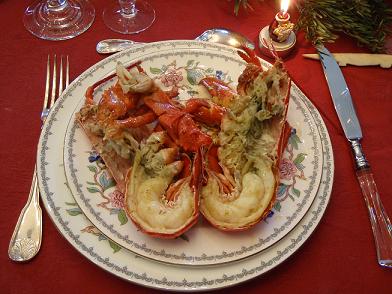Just for fun

(Courtesy Wikimedia Commons © 2008).
The theme for this semester's contributions to the Multiple Organisms menagerie is the winter holiday season. The species chosen by the Spring 2009 class relate in some way to holiday customs, folklore, superstition, legend, or even diseases.
Given the fact that a number of other marine decapods—crabs, lobsters, shrimp, and prawns to name only a few—have remained popular fare on holiday tables for centuries, you might find yourself wondering if the Yeti crab would make a fine addition to your family tradition . . . or if a lucrative business opportunity purveying luscious Yeti crab meat to the masses awaits you.
Both have sandy claws!
Unfortunately, a whiff of the Yeti crab's habitat reveals that eating this organism would probably be a frightful experience, no matter how delightful the weather outside might be. Yeti crabs live near hydrothermal vents, which emit abundant quantities of hydrogen sulfide. Hydrogen sulfide is the noxious gas a cracked egg leaks after reaching the end of its useful existence. It's the same substance that gives flatulence its disgusting odor.
In other words, a dish of Yeti crab would taste like rotten eggs! How's that for a holiday surprise?
All is not lost, however. Hydrogen sulfide is believed to reduce post-operative inflammation and even improve erectile function, so the revolting Yeti crab may turn out to have its uses after all. (Accordingly, Kiwa hirsuta has launched a We Were Just Discovered—We Might Be Pharmaceutically Useful campaign.)
If nothing else, a stuffed Kiwa hirsuta makes a delightful little toy.